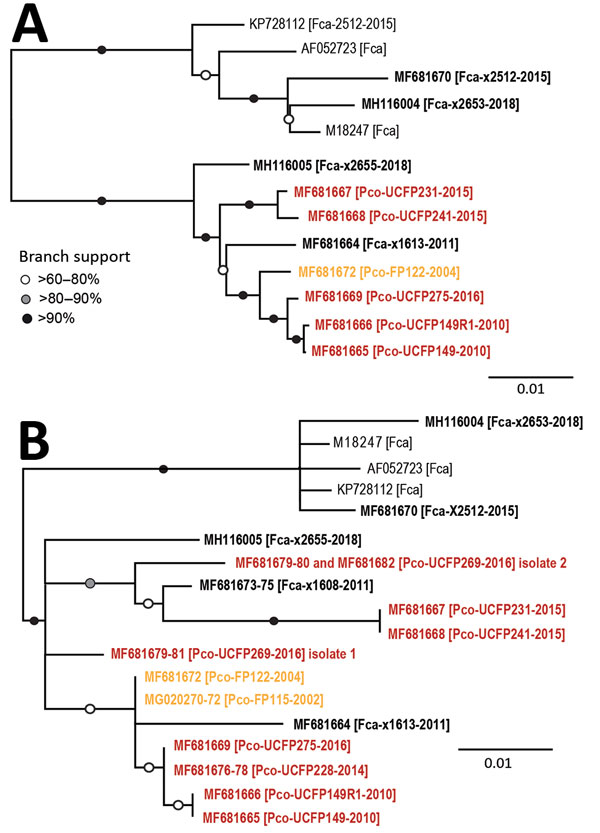Volume 25, Number 1—January 2019
Research
Multiple Introductions of Domestic Cat Feline Leukemia Virus in Endangered Florida Panthers1
Figure 3

Figure 3. Maximum-likelihood phylogenetic trees showing 2 distinct FeLV-Pco clades in Florida panthers, Florida, USA. A) Full-genome phylogeny indicates Florida FeLV-A sequences are monophyletic. Historic and contemporary FeLV outbreak sequences reside in 1 clade, and a second clade consists solely of contemporary FeLV outbreak sequences. B) Genotyping sequence phylogeny generated from concatenating 3 regions of ≈100 bp (LTR-gag, gag, and env) compares full-genome isolates demonstrated in panel A in addition to 4 individual sequences. Black text indicates FeLV from domestic cats, orange indicates FeLV from panthers during the historic outbreak (2002–2004), and red indicates FeLV from panthers during the contemporary outbreak (2010–2016). Bold indicates isolates sequenced in this study. GenBank accession numbers are provided. FeLV, feline leukemia virus; LTR, long terminal repeat.
1Preliminary results from this study were presented at the Ecology and Evolution of Infectious Diseases Conference, June 24–27, 2017, Santa Barbara, California, USA.